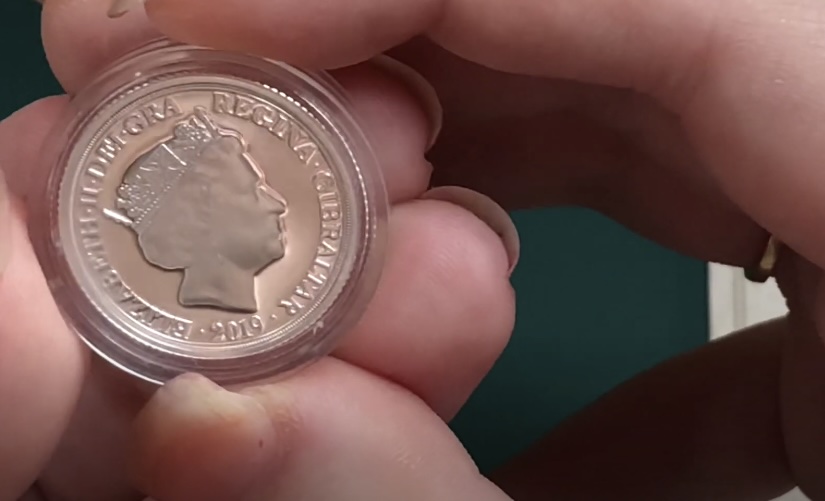The silver sovereign coin has captivated collectors and investors alike, combining rich history with a tangible asset’s allure. In 2024, the interest in these coins continues to grow, driven by their beauty and the security they offer in uncertain economic times. This article delves into what a silver sovereign coin is, its history, and significance, and why it remains a sought-after piece in collections around the world.
Understanding the Silver Sovereign Coin
What is a silver sovereign coin? Simply put, it’s a coin struck from silver, typically issued by a national mint. These coins are usually legal tender, though their face value is often surpassed by their material and collectible value. The term ‘sovereign’ originally referred to a gold coin issued in the United Kingdom starting in 1817, but over time, it has come to include similar high-quality silver coins issued by other countries. Notable characteristics of Silver Sovereign Coins comprise:
- Material: Made primarily of silver, these coins generally contain 92.5% silver and 7.5% other metals for durability.
- Design: The designs often feature national symbols or historical figures, making them pieces of art as well as currency.
- Legal Tender: Despite their collector value, silver sovereign coins are legal tender in their country of origin.
- Minting: They are minted by trusted national mints, ensuring their quality and authenticity.
The History and Evolution of Silver Sovereign Coins
Sovereign coins trace their origins to medieval Europe, where they were initially minted in gold as a means of standardizing currency and facilitating trade. The term “sovereign” itself denotes the supreme authority of the issuing monarch over the coin’s value and legitimacy. The British Sovereign, introduced in 1489 during the reign of Henry VII, exemplifies this early era of gold coinage.
Transition to Silver Sovereigns
As trade and commerce expanded globally, there arose a demand for more accessible and widely circulated coins beyond the realm of gold. This led to the production of silver sovereign coins, which offered a more affordable and practical alternative to their gold counterparts. Key developments in the history of silver sovereign coins include:
- Global Demand: The increasing demand for secure and valuable coins prompted mints worldwide to produce silver versions of sovereigns, catering to a broader range of consumers.
- Accessibility: Silver sovereign coins democratized access to precious metal currency, making it more attainable for the average person to engage in commerce and savings.
- Popularity: Silver sovereign coins gained popularity for their intrinsic value, durability, and aesthetic appeal, becoming coveted items among collectors and investors alike.
Prominent Examples
Several notable examples of silver sovereign coins have left a lasting imprint on numismatic history, each with its own unique characteristics and significance:
| Coin | Minting History | Notable Features |
| British Silver Britannia | First introduced in 1997 | Renowned for its craftsmanship and purity, typically minted in .999 fine silver. |
| Canadian Silver Maple Leaf | Minted since 1988 by the Royal Canadian Mint | Recognized for its 99.99% silver purity and detailed engraving of Canada’s iconic maple leaf. |
| Australian Silver Kangaroo | Issued by the Perth Mint in Australia | Known for its depiction of the classic kangaroo against a stylized rural backdrop. |
These coins, among others, exemplify the diversity and innovation within the realm of silver sovereign coinage, showcasing the artistry, technology, and cultural heritage of their respective nations.
Legacy and Influence
The legacy of silver sovereign coins extends far beyond their monetary value, serving as tangible artifacts of history and symbols of national identity. Their enduring appeal lies in their ability to transcend time, preserving the stories and aspirations of past civilizations for future generations to cherish and admire.
Why Collect Silver Sovereign Coins?
Collecting silver sovereign coins is more than a hobby; it’s an investment in history and art. Here are several reasons why these coins are so valued:
Historical Significance
Silver sovereign coins carry with them a rich tapestry of historical narratives. Each coin encapsulates a specific period, reflecting the political, social, and economic circumstances of its time. For example:
- British Sovereigns: The British Sovereign, first minted in 1489 during the reign of Henry VII, holds a pivotal place in numismatic history. It has witnessed the rise and fall of empires, survived wars and revolutions, and evolved alongside the British monarchy.
- American Silver Eagles: Minted by the United States Mint since 1986, the American Silver Eagle pays homage to the nation’s heritage and values, featuring iconic symbols such as the Walking Liberty and the heraldic eagle.
- Ancient Silver Coins: Coins from ancient civilizations like Greece and Rome provide invaluable insights into the cultural, economic, and artistic achievements of bygone eras.
Artistic Value
Silver sovereign coins are not merely monetary instruments; they are miniature masterpieces crafted by skilled artisans. The intricate designs, meticulous detailing, and symbolic motifs elevate these coins to the realm of art. Examples include:
- Portraits of Monarchs: Many silver sovereigns feature effigies of reigning monarchs, capturing their likeness and character for posterity.
- Allegorical Representations: Symbolism abounds in coin designs, with allegorical figures representing concepts such as liberty, justice, and prosperity.
- Nature and Wildlife: Silver coins often depict flora and fauna, showcasing the beauty of the natural world.
Investment Potential
Silver possesses inherent value due to its scarcity, durability, and intrinsic properties. As a tangible asset, silver sovereign coins serve as a hedge against economic uncertainty and inflation. Key points to consider regarding investment potential include:
- Intrinsic Value: The silver content of these coins ensures a baseline value, providing stability in times of market volatility.
- Numismatic Premium: Rare or collectible coins may command premiums above their silver bullion value, offering additional potential for appreciation.
- Diversification: Including silver sovereign coins in an investment portfolio can diversify risk and enhance long-term returns.
Cultural Representation
Beyond their monetary and aesthetic attributes, silver sovereign coins serve as cultural ambassadors, reflecting the heritage and identity of the issuing nation. Features highlighting cultural representation include:
- National Symbols: Coins often feature emblems, landmarks, and symbols that encapsulate the essence of a nation’s identity.
- Historical Events: Commemorative coins mark significant historical milestones, celebrating achievements or honoring heroes.
- Collector Communities: The passion for collecting silver sovereign coins fosters vibrant communities of numismatists worldwide, united by a shared appreciation for history and culture.
How to Start Collecting Silver Sovereign Coins

Starting a collection of silver sovereign coins involves understanding what makes a coin valuable and desirable. Here are some tips:
Research
Before diving into collecting, immerse yourself in the world of numismatics by conducting thorough research. Key areas to explore include:
- Coin Types: Familiarize yourself with the various types of silver sovereign coins available, such as British Sovereigns, American Silver Eagles, and ancient silver coins from civilizations like Greece and Rome.
- Historical Significance: Understand the historical context and significance of different coins, including their minting history, notable designs, and cultural relevance.
- Collector Preferences: Gain insight into what collectors value in silver sovereign coins, whether it’s rarity, historical significance, artistic appeal, or condition.
Authenticity
Ensuring the authenticity of your coins is paramount to building a reputable collection. Take the following precautions:
- Purchase from Reputable Dealers: Buy silver sovereign coins from established and trustworthy dealers or reputable online marketplaces with a proven track record of authenticity.
- Verify Certifications: Look for coins that come with certification from recognized grading services, such as the Professional Coin Grading Service (PCGS) or the Numismatic Guaranty Corporation (NGC).
Storage
Proper storage is essential to preserve the value and integrity of your silver sovereign coins. Consider the following storage options:
- Coin Holders: Invest in high-quality coin holders or capsules to protect individual coins from scratches, fingerprints, and environmental damage.
- Albums or Display Cases: Store your coins in albums or display cases designed specifically for coin collections, providing both protection and easy viewing.
- Temperature and Humidity Control: Maintain a stable environment with controlled temperature and humidity to prevent tarnishing and deterioration of your coins over time.
Budget
Establishing a budget is crucial, especially when starting your collection. Follow these guidelines to manage your finances effectively:
- Start Small: Begin your collection with affordable silver sovereign coins within your budgetary constraints, focusing on quality over quantity.
- Gradually Invest: As your collection grows and your knowledge expands, consider gradually increasing your investment in more valuable or rare coins.
- Set Limits: Set clear financial limits and boundaries to avoid overspending or impulse purchases, ensuring a sustainable and enjoyable collecting experience.
Conclusion
The allure of what a silver sovereign coin offers goes beyond its shimmering appearance. These coins are a gateway to the past, an art form, and a solid investment, all rolled into one. Whether you’re a seasoned collector or a novice, understanding what is a silver sovereign coin and its value can enrich both your collection and your appreciation of numismatics. As we look towards the future, the legacy of silver sovereign coins is sure to continue, cherished by generations to come.
FAQ
A: Yes, technically, silver sovereign coins are legal tender. However, their material value is typically much higher than their face value, making them impractical for everyday transactions.
A: Yes, they can be. Their value is influenced by the silver market, collector demand, and historical significance, which can increase over time.
A: Store them in a cool, dry place. Use coin holders or capsules to protect them from scratches and environmental damage.
A: From national mints, coin dealers, auctions, and online marketplaces. Always ensure the dealer’s reliability before purchasing.


